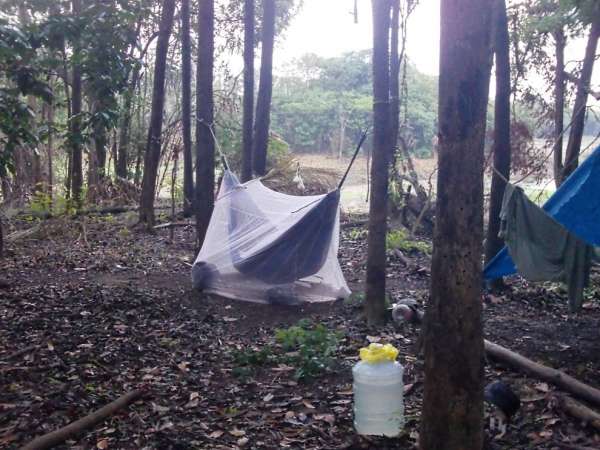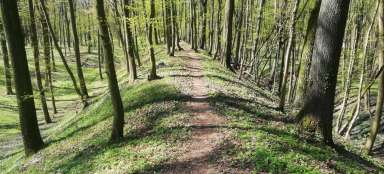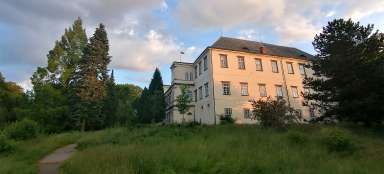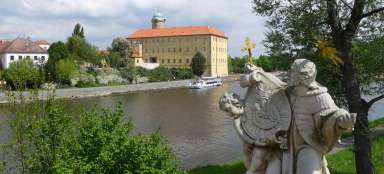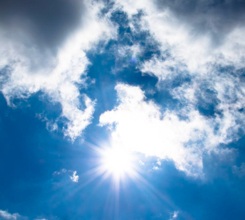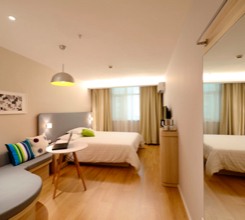How not to cool off in the wild
What about traveler's diarrhea
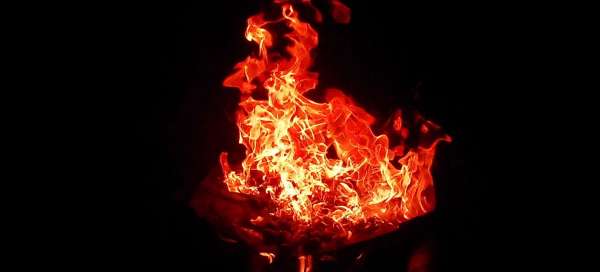
One of the factors threatening health and life in emergency situations is a lack of heat. One can cool down in just a few hours, in freezing conditions in a few minutes. What will we need to start a fire and how to do it? Let's say a few pieces of information that may be useful to us in emergency situations.
Body hypothermia
Tanzania's smallest national park
Hypothermia occurs when the body temperature drops below 35 degrees Celsius. Then the body's thermal regulation collapses. In the beginning, the body tries to prevent heat loss by shaking, then it starts to draw blood to the internal organs and frostbite begins to form, which in many cases results in the death of frozen parts of the body. There are several factors that accelerate the loss of body heat: – ** Cold wind **: It penetrates clothing and significantly reduces the ambient temperature. Try to protect yourself from the wind as much as possible. Solve heat leakage from the head area with a hood or other suitable clothing (wrap a sweatshirt, sweater, trousers, etc. around your head. Aesthetics doesn't matter much, the main thing is that it warms up). Close all pockets on the garment. Keep your hands in gloves or hide them under the jacket by pulling your hands out of the sleeves and keep them along your body under the jacket (plug the sleeves so that they do not blow into them). This results in the least heat leakage. – ** Wet clothing **: Evaporation of moisture from clothing accelerates the loss of body heat several times. If possible, change into dry clothing as soon as possible or dry wet items near a fire (do not put clothing too close to fire to prevent damage). – ** Cold drinks **: In case of bad weather, try to avoid cold liquids. This also cools the body from the inside. A hot drink is best for warming in freezing weather. – ** Cold ground **: Never sit directly on bare ground. Cold and moisture from the ground accelerate the loss of your body heat. Sit on a backpack or a layer of needles, for example. – ** Alcohol **: Many of us have the idea of hard alcohol. Give yourself a „doll“ to warm up. In the first moment, there really is a feeling of warming up, but in the following minutes, alcohol has the exact opposite effect. The blood vessels dilate, the heart beats faster and thus the body cools down faster.
Basic fire preparation
The only way to prevent hypothermia is heat. Preparing and lighting a fire is one of the basic things we should be able to control. If we get into an emergency situation where we need to warm up, boil water, or adjust food, fire is sometimes the only way out. Sometimes it's not really easy to start and maintain a fire. I saw it for myself in the Amazon jungle, where getting some dry wood for fire is really a problem. In general, conifers are suitable for large flames and heating, and harder wood species (oak, beech, hornbeam, etc.) are more suitable for cooking and maintaining fire. But if you are frozen or you want to boil water so you can drink, you don't care what kind of wood you are burning. – ** Troud **: Troud is the most important thing when starting a fire. It is actually a material that ignites easily. Whatever you use, make sure the trunk is as dry as possible. A suitable trunk can be, for example, dry grass, dry moss, bird's nest, coconut fibers, dry seaweed, fluff from flowering plants, cotton wool, women's tampon … Also birch bark (burns even when wet), a piece of synthetic filling made of jackets or sleeping bags, or bird feathers. There is also a birch bark in the jungle, which they call Babassu. It is a palm tree that has a high oil content, just like a birch in Europe. – ** Chips and small twigs **: Always prepare a sufficient number of twigs and chips, which you will gradually add after the trunk burns. – ** Branches and logs **: Larger pieces of wood serve as the main fuel. Choose branches with such a diameter that you can break them to the required length either by hand or by bracing between two nearby trees, followed by pressure on the longer part of the branch. This will save you a lot of energy, which may come in handy later. You can also use dry manure or dry tree mushrooms (eg Choroš) as a substitute fuel.
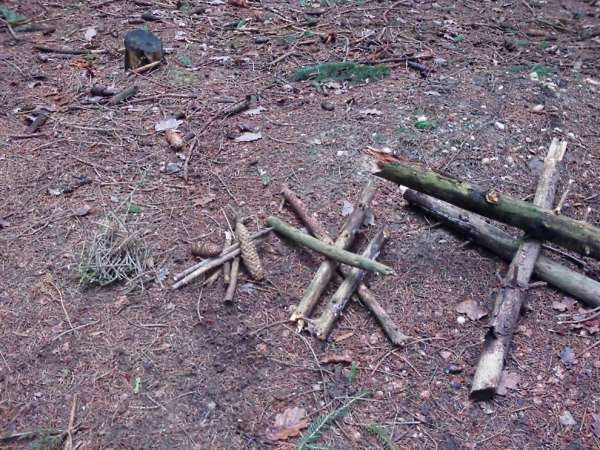
Breaking a long branch using two trees
Easy help with cutting wood
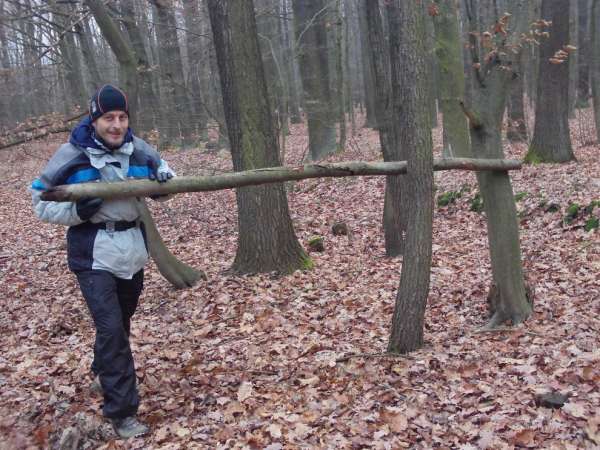
Types of fire
Tanzania's smallest national park
Much has been written about what types of fires exist and what they are suitable for. Everyone can find them in any camping guide and on the Internet. But when you're in an emergency, you're usually happy with a pile of carelessly thrown sticks in one pile, thinking of far more important things than building a pyramid, a pagoda, or a border. But I still want to point out one species that is very practical, especially in terms of overnight stays and keeping warm.
Siberian fire
Also known as Finnish Fire, Taiga or Sandwich. It is a type of fire that is suitable for overnight stays or for keeping hot coals. This fire can burn all night, sometimes 24 hours depending on the wood used. What's going on? It is actually just a longitudinally halved log, which gradually burns from the inside out. How to do it? If you are at least a little lucky and come across a large log while searching for wood (the larger the diameter, the longer it will burn), try halving it lengthwise with a few hardwood wedges. You can easily make wedges by cutting a branch of hardwood and using a thicker piece of wood as a stick gradually hammering wedges into the log until it is halved (it's a little harder, but a night at this fire will definitely be more pleasant, because fire can keep you warm along body). Then we close half of the log with the split part up between the stones (or poles stuck in the ground) so that it does not sway. Using a trumpet and twigs, light a fire along the entire length of the log and let it ignite. Gradually, the top of the halved log will start to burn. Now it's time to turn this fire down with the other half of the log, the split part down. Insert pins of raw branches between these two halves at both ends so that the log halves do not lie completely on top of each other, but so that there is a space of approx. 3–5 cm between them and thus a sufficient supply of air is ensured. The fire will not burn with a large flame, but rather gradually burn. This way it can last you up to 24 hours. Sleeping next to such a fire is very pleasant. However, be careful not to catch your sleeping bag or clothing from flying sparks. A less laborious way to prepare this fire is to find two logs that you place between 4 pegs of raw wood stuck in the ground and place them on top of each other. The ignition procedure is the same as for Siberian fire, with the difference that you do not have two halves of one log, but two whole logs. The length of the logs also determines how long the fire will be in the final. You can cut logs by burning them, when you start a fire under the log, which you direct to the place where you want to divide the log. Gradually scrape the charred parts of the log with a branch, stone or other suitable tool until it burns out. In the next article, we will look at ways to start a fire and how we can transmit fire.
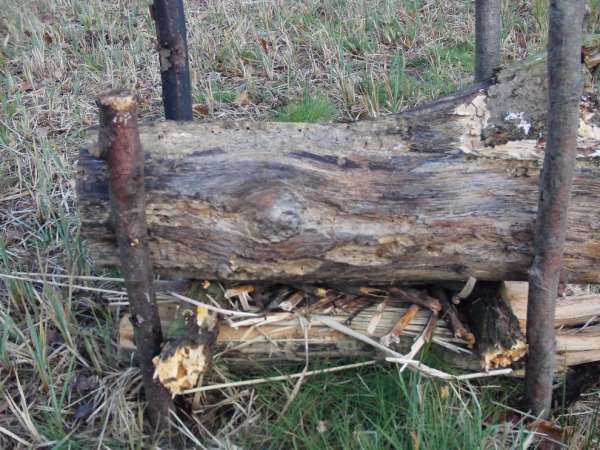
Dry wood
We can easily find dry branches on coniferous trees. These are dead branches on the lower floors of the tree. The needles on the upper floors of the tree protect these branches from rainwater, so they are usually dry even after heavy rains. Therefore, it is also better to choose a place to sleep in coniferous forests. Bad luck from conifers can also serve as an excellent kindling when starting a fire.

Bed made of twigs
A bed placed in a hollow of the terrain will protect you well from moisture and cold from the ground. You place a layer of needles on a simple construction made of branches.

South America
In some parts of the world, you have no problems with hypothermia. The temperature does not fall below 20 degrees even overnight. But fire protects you from other pitfalls of the jungle.
